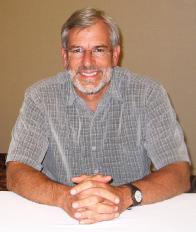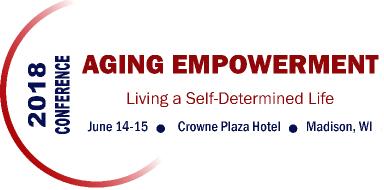
News
Call for 2018 SD Conference Presentations!
Are you interested in presenting at the 2018 Self-Determination Conference? We are seeking session presentations for Tuesday, October 30 &Wednesday, October 31.
- Proposals must include a self-advocate(s) as a lead or co-presenter.
- Panels should be limited to no more than 3 people.
- Conference sessions must support Self-Determination and Self-Directed principles.
- Presentations must include an activity and tools that can be used at the session and as a takeaway.
- Presentations should focus on practical, take-home strategies that people can implement in their work and lives.
- Sessions should not promote specific agencies or products.
- Repeat or similar sessions from previous conferences will not be considered.
- Sessions will be 1.5 hours in length.
- A typical session has an audience of 50-75 attendees.
If your session is accepted, presenters will be provided with a one day pass on the day of your presentation. If you would like to attend the entire conference, you must register. Self-advocate presenters can apply for a scholarship.
Download the Proposal Form (If you would like the form in other formats, contact Fil Clissa fil.clissa@wisconsin.gov)

February 2018
Connect | Share | Learn | http://sdnetworkwi.org/
Register Now for Disability Advocacy Day
Let your voice be heard at the 2018 Disability Advocacy Day on March 20th in Madison. It's a day designed to connect you with your legislators so you can talk about issues that matter to you. You are the expert in sharing how legislative policies affect people with disabilities in their everyday lives. Learn more and register today!
Join the Discussion!
As mentioned in our last newsletter, the Self-determination Network will be posting a discussion question related to self-determination/self-direction every month. By doing this, our hope is that we can share experiences and learn from each other.
To kick this off, our first discussion question is about something that people with disabilities say is one of their biggest barriers--transportation. What are some promising ways to obtain affordable, accessible transportation using self-direction strategies? Join the Discussion!
2018 marks a big milestone for InControl Wisconsin – our 5th Annual Aging Empowerment Conference! We are making a splash to celebrate, and hosting a global leader in the empowerment movement. Dr. Simon Duffy is the founding Director of the Centre for Welfare Reform in the UK, and Secretary to the international cooperative Citizen Network. Simon is best known for his work on models to extend self-directed support to all groups, including elders. His work on citizenship has also challenged the view that older people can no longer be citizens and he works to break down barriers between different groups trying to achieve a more inclusive and just society.
Simon's keynote address will illustrate a philosophical history of citizenship and old age; a review of the movement toward self-determination and self-direction; highlights of interesting developments globally; and strategic ideas for building strong moments for change on both the public awareness and political front. He'll stay with us for Friday's Advocacy Summit, where we will consider strategies relevant to our work in Wisconsin and learn how to impact change in our communities.
We invite you to join us as a Sponsor/Exhibitor, where you'll be an instrumental presence throughout the conference. We'll have dedicated hours for tabling and networking, and every sponsor level includes conference registration, because we recognize that you'll want to be included in the entire event.
We are also accepting workshop presentation ideas. Here is our Call for Proposals, and we welcome your ideas about aging empowerment that you'd like to share with our conference audience!
The Self-Determination Network includes some very talented members and we want to help you to get to know each other a little better. Member Spotlight is a great way for us to get to know each other better.
For February, we shine the spotlight on board member of InControl Wisconsin, Lynn. Having been involved in a disability field for many years, he believes that we're still at the tip of the iceberg with learning how self-direction can impact on people's lives. When he's not busy advocating for people with disabilities, he enjoys traveling to new places and exploring different cultures. Stop by this month's Member Spotlight to get to know Lynn.

What would the world be like today without cell phones or mobile devices? It’s nearly impossible to fathom. For many people, including those with disabilities, mobile devices have become a real lifeline. In this month's entry, Stacy discusses how having a cell phone has changed her life! We encourage you to share your thoughts and experiences as well.
Take five minutes to check out what's happening on the Self-Determination Network:
- Get Involved: Laura posted about an opportunity to get involved in an anti-violence leadership program for survivors of violence and underserved/under-represented communities. Learn how to get involved!
- Accessibility Survey: UW-Milwaukee is conducting a survey to examine the experiences of people with disabilities pertaining to the accessibility of public buildings, including physical and cognitive barriers that prevent people with disabilities from being able to participate fully in the community. Take the survey and share it with others!
- Group Home Report: The Department of Health and Human Services examined states' monitoring and reporting of injuries and other critical incidents of people with developmental disabilities living in group homes. Find out what they found.
- New Medicare-Medicaid Resources: The CMS Medicare-Medicaid Coordination Office has three new resource guides intended to support providers and health plans serving older adults and caregivers. Learn what these guides offer.
- Airline Service Animal Requirements: Airline accessibility has taken center stage recently. One airline is taking steps to further protect its customers, employees and service animals and support animals by implementing advance documentation requirements for those animals. Read about how the new requirements ensure safety for all.
- Poverty and Health Findings: Recent population surveys have shown that nearly one third of people with disabilities live below the poverty line and they’re more than twice as likely to live in poverty when compared to their non-disabled peers. Learn how this impacts their health.
- Updated Fact Sheet: The Consortium for Citizens with Disabilities recently released an updated fact sheet about Supplemental Security Income for people with disabilities. Check out what's new!
- Accessible Clothing: Another large retail chain announced a clothing line for people with disabilities. Find out which store and what it will include.
- State Family Caregiver Rankings: For family caregivers who provide unpaid to older adults and family members with disabilities, the state you live in can be a big factor in your ability to be a family caregiver. Learn where Wisconsin ranks.
- New Tool: Wisconsin has a new tool for people who are deaf or hard of hearing. Learn how communication visor cards give deaf and hard of hearing drivers a clear way to communicate with law enforcement.
Upcoming Events
Here's a sample of upcoming events listed on the Self-Determination Network:
- WisconsinSibs: Journey Forward : February 17th, 8:30a.m. to 1p.m., Easterseals, Waukesha, WI
- Disability Rights Wisconsin Listening Session: March 2nd, 4p.m. to 6:30p.m., Wisconsin African American Women's Center, Milwaukee WI
-
Disability Advocacy Day: March 20th, 9:30a.m. to 3:30p.m., State Capitol, Madison WI
- Advocacy for Change: April 12th, 8:30a.m. to 4p.m., Concourse Hotel, Madison WI
- 2018 Employment First Conference: May 22nd, Kalahari Resort, Wisconsin Dells WI
- 2018 Aging Empowerment Conference: June 14th-15th, Crowne Plaza Hotel and Conference Center, Madison WI
Post your event on the Self-Determination Network and it can be included in future Network News emails to members! Questions? Suggestions? Contact Stacy Ellingen.
The Self-Determination Network is powered by InControl Wisconsin and supported financially by our members and Sponsors. We couldn't keep this Network going with you! Find out how you can help support the Network.
CHANNEL 3000: Wisconsin releases free visor cards for deaf, hard of hearing drivers to communicate with police
By SD Network, 2018-02-08
Wisconsin has a new tool for people who are deaf or hard of hearing. The communication visor card is available to anyone at no cost and gives deaf and hard of hearing drivers a clear way to communicate with law enforcement. The card has pictures on it that indicate things such as a broken taillight, expired license plate tags, reckless driving, and a need for a tow truck.
The Rehabilitation Engineering and Assistive Technology Society of North America (RESNA) Standards Committee on Air Travel is looking for input and concerns from the disability, veterans and caregiver communities regarding the problems with air travel for passengers with disabilities in order to set revised and updated standards for wheelchair handling, labeling, storage, airline and airline contractor training.
If you use a wheelchair or scooter, or are a caregiver/family member of someone who uses a wheelchair or scooter, we would appreciate you taking a few minutes to answer the following survey regarding your experiences with air travel. We would appreciate if you could complete the survey by Monday, February 12.
Commercial Flight Experiences Survey: https://www.surveymonkey.com/r/792HG6D
If you have any questions, feel free to contact:
Kathy Hooyenga
Assistive Technology Unit
University of Illinois at Chicago
hooyenga@uic.edu
It's widely known that where you live can have a significant impact on your quantity of life. For family caregivers who provide unpaid to older adults and family members with disabilities, the state you live in can be a big factor in your ability to be a family caregiver. States were recently ranked on the availability of supports and services for family caregivers. Wisconsin came in at #7. Senior care options aren't cheap, but we have many programs and policies that make it a great place for caregivers of senior citizens.
Target is the latest retail chain to introduce a clothing line for adults with disabilities. They will roll out a women's clothing line called "Universal Thread" which will also be sensory friendly. In addition to things such as high-rise backs and longer inseams and wider leg openings, the line will also have features such as tagless clothes and extra soft material.

How are you involved with self-determination? Why did you join the SD Network?
Lynn has been involved in the disability field since the late 70s. He became aware early on that government, provider agencies, and (sometimes) families were exerting too much control over people with disabilities. He could see that this was making it hard (or sometimes impossible) for people to grow, learn, become real citizens, and pursue a life of their own choosing. “As an advocate, I knew I had to push back against that hyper-control of people. Back then, we didn’t call it self-determination, but later when the self-determination movement began to take shape in North America and other parts of the world, I got excited about that and wanted to be part of it,” he explains. Joining the SD Network was an obvious choice for him--it was a way for me to connect with other self-determination believers in Wisconsin.
Tell us some good news - what's the most exciting thing happening for you (or in Wisconsin) in terms self-determination?
Lynn is excited about IRIS starting up in Dane County. He says that it looks like it might be the first county in the state where more than half of the adults with developmental disabilities choose self-direction, either in IRIS or in Family Care. “Since Dane County is the place in Wisconsin where self-determination first took hold in a sizable way in our state, there are many people and organizations here who have innovative ideas about how to support people to self-direct their services and their lives,” he explains. He believes that innovative spirit can energize the IRIS program in ways that we haven’t seen yet. In particular, he thinks it will be interesting to see how IRIS participants self-direct their supported employment and supported living services in Dane County.
What tip or resource would you like to share with people who want to be more self-determined?
Lynn would like to see IRIS plans include a combination of independent workers and service provider agencies working together. He explains that a lot of people in IRIS have chosen to hire their own workers, which is great; however, there are some progressive provider agencies in the state who have respect for people’s right to make decisions about how their services will be provided. He thinks there is potential for more people to develop IRIS plans which include a combination of direct hiring of independent workers and contracting for services with provider agencies that believe in self-direction.
What message would you like to share with the members of the SD Network?
Lynn wants to encourage people to keep exploring self-direction. Even though the IRIS program and the self-direction option within Family Care have been around for several years, he still feels like we’re in the early stages of understanding how to apply self-direction principles to the long-term care system. “I hope that people will keep trying out new ideas and pushing the envelope on this. I think we are just barely beginning to discover the full potential of what self-determination ideas could mean for our long-term care system,” he says.
What are some of your hobbies?
Lynn and his wife love to travel to new places and discover vistas, food, people, and culture that is different from their own. They are both semi-retired now, so they have been able to have some great adventures in recent years. One that stands out to him was backpacking the Camino de Santiago, the 600 mile 1000 year old pilgrimage in northern Spain, that was once hiked by Charlemagne. “It was an amazing experience on many levels,” he says.
***We love hearing the views and opinions of Network members. We need to mention that the views and opinions expressed on this site are those of the person who is sharing them. They do not necessarily reflect InControl Wisconsin or any of our supporters and funders.
CONSORTIUM FOR CITIZENS WITH DISABILITIES: PRESERVE SUPPLEMENTAL SECURITY INCOME: A VITAL PART OF OUR SOCIAL SECURITY SYSTEM
By SD Network, 2018-01-31
The Consortium for Citizens with Disabilities recently released an updated fact sheet about Supplemental Security Income for people with disabilities. The sheet covered a variety of topics and has some very interested statistics.






